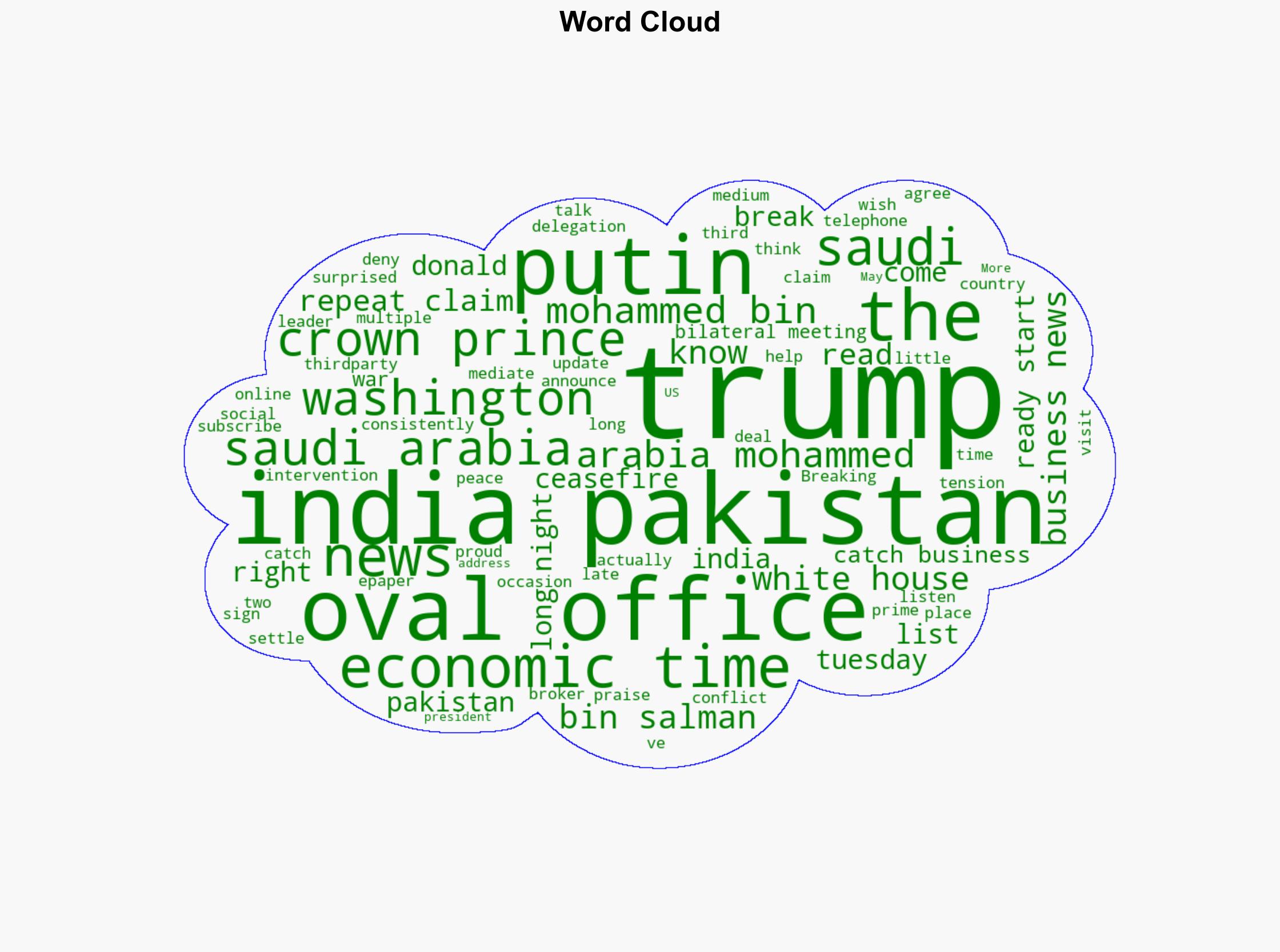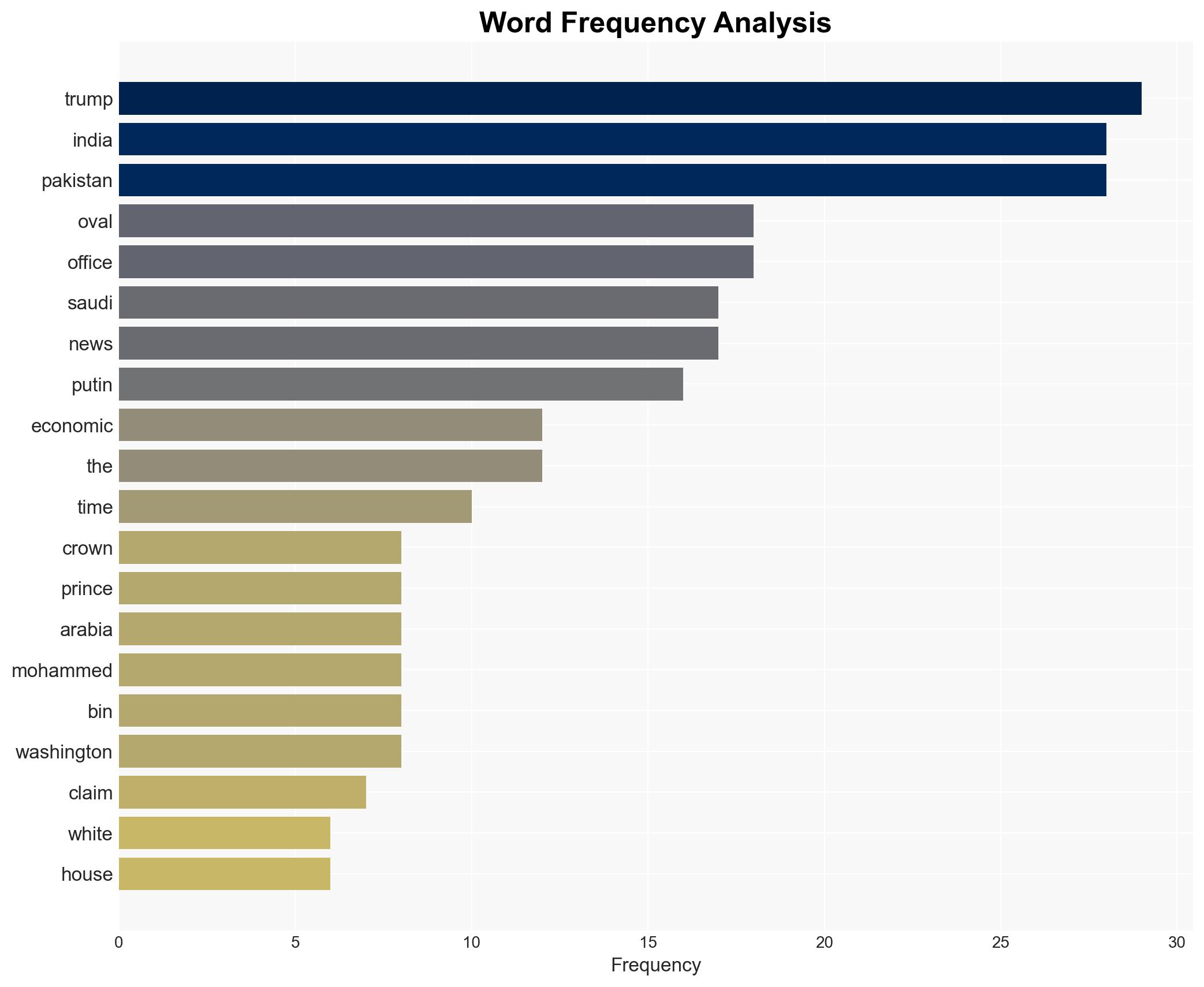Trump repeats claim he stopped war between India Pakistan – The Times of India
Published on: 2025-11-19
AI-powered OSINT brief from verified open sources. Automated NLP signal extraction with human verification. See our Methodology and Why WorldWideWatchers.
Intelligence Report:
1. BLUF (Bottom Line Up Front)
With moderate confidence, the most supported hypothesis is that President Trump’s claims of mediating a ceasefire between India and Pakistan are exaggerated and primarily serve a domestic political agenda. Strategic recommendations include monitoring regional diplomatic communications for any shifts in narrative and preparing for potential misinformation campaigns.
2. Competing Hypotheses
Hypothesis 1: President Trump’s claims are accurate, and he played a significant role in mediating a ceasefire between India and Pakistan. This hypothesis is supported by Pakistan’s praise of Trump’s involvement.
Hypothesis 2: President Trump’s claims are exaggerated or inaccurate, serving primarily as a political tool to bolster his image. This is supported by India’s consistent denial of third-party intervention and the lack of independent verification of his role.
The second hypothesis is more likely due to the absence of corroborating evidence from neutral parties and India’s explicit denial of external mediation.
3. Key Assumptions and Red Flags
Assumptions: It is assumed that both India and Pakistan would publicly acknowledge significant third-party mediation if it had occurred. It is also assumed that Trump’s statements are intended for a domestic audience rather than a diplomatic one.
Red Flags: The repetition of claims without new evidence suggests potential misinformation. The presence of high-profile individuals like the Saudi Crown Prince during the announcement may indicate an attempt to lend credibility through association.
4. Implications and Strategic Risks
The primary risk is the potential for misinformation to influence public perception and diplomatic relations. If Trump’s claims are perceived as credible, it could alter the diplomatic dynamics in South Asia. Conversely, if disproven, it may damage U.S. credibility in international mediation efforts. There is also a risk of escalation if either India or Pakistan feels misrepresented or pressured by external narratives.
5. Recommendations and Outlook
- Monitor official communications from India and Pakistan for any shifts in narrative or acknowledgment of third-party mediation.
- Engage with regional allies to clarify the U.S. position and intentions regarding South Asian diplomacy.
- Best-case scenario: The situation remains stable, and Trump’s claims are dismissed without incident.
- Worst-case scenario: Misinformation leads to diplomatic tensions or escalates existing conflicts.
- Most-likely scenario: The claims are largely ignored by international actors, with minimal impact on regional dynamics.
6. Key Individuals and Entities
Donald Trump, Mohammed bin Salman, Vladimir Putin
7. Thematic Tags
Regional Focus, South Asia, Diplomacy, Misinformation, U.S. Foreign Policy
Structured Analytic Techniques Applied
- Causal Layered Analysis (CLA): Analyze events across surface happenings, systems, worldviews, and myths.
- Cross-Impact Simulation: Model ripple effects across neighboring states, conflicts, or economic dependencies.
- Scenario Generation: Explore divergent futures under varying assumptions to identify plausible paths.
Explore more:
Regional Focus Briefs ·
Daily Summary ·
Support us





